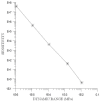Magnetic Sensors Based on Amorphous Ferromagnetic Materials: A Review
- PMID: 26569244
- PMCID: PMC4701283
- DOI: 10.3390/s151128340
Magnetic Sensors Based on Amorphous Ferromagnetic Materials: A Review
Abstract
Currently there are many types of sensors that are used in lots of applications. Among these, magnetic sensors are a good alternative for the detection and measurement of different phenomena because they are a "simple" and readily available technology. For the construction of such devices there are many magnetic materials available, although amorphous ferromagnetic materials are the most suitable. The existence in the market of these materials allows the production of different kinds of sensors, without requiring expensive manufacture investments for the magnetic cores. Furthermore, these are not fragile materials that require special care, favouring the construction of solid and reliable devices. Another important feature is that these sensors can be developed without electric contact between the measuring device and the sensor, making them especially fit for use in harsh environments. In this review we will look at the main types of developed magnetic sensors. This work presents the state of the art of magnetic sensors based on amorphous ferromagnetic materials used in modern technology: security devices, weapon detection, magnetic maps, car industry, credit cards, etc.
Keywords: amorphous ribbons; amorphous wire; bistability; ferromagnetic material; magnetic core; magnetic sensor; magnetoimpedance; magnetometer; security system; weapon detectors.
Figures
















References
-
- Roy D. Development of novel magnetic grippers for use in unstructured robotic workspace. Robot. Comput. Integr. Manuf. 2015;35:16–41. doi: 10.1016/j.rcim.2015.02.003. - DOI
-
- Vähä P., Heikkilä T., Kilpeläinen P., Järviluoma M., Gambao E. Extending automation of building construction—Survey on potential sensor technologies and robotic applications. Autom. Constr. 2013;36:168–178. doi: 10.1016/j.autcon.2013.08.002. - DOI
-
- Silva P., Pinto P.M., Postolache O., Dias J.M. Tactile sensors for robotic applications. Measurement. 2013;46:1257–1271.
-
- Cullity B.D. Introduction to Magnetic Materials. Addison-Wesley; Boston, MA, USA: 1972.
-
- Chikazumi S., Charap S.H. Physics of Magnetism. John Wiley; Hoboken, NJ, USA: 1964.
Publication types
LinkOut - more resources
Full Text Sources
Other Literature Sources

